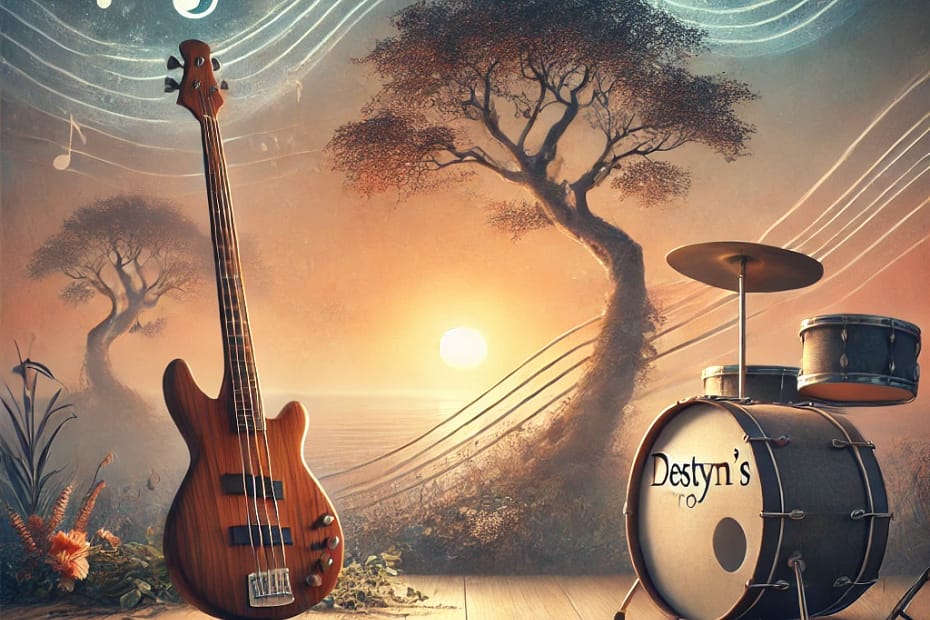by Destyn 01/05/2025
“Music has always been a part of my life. It wasn’t just about playing an instrument; it was about connecting, finding a groove, and embracing joy amidst life’s challenges.”
For as long as I can remember, music has been my go-to. It’s been there in every jam session with friends, every backyard strum on an acoustic guitar, and every spontaneous groove. I never set out to be a pro—it was always about connecting with the joy of the music, whether sharing it or simply enjoying the moment. But in my 30s, I got hit with a curveball: Essential Tremor Disorder. It made things I once took for granted, like playing the guitar, a struggle. The harder I tried, the more the shakes took over. Joy began to fade into frustration.
What is Essential Tremor?
Essential Tremor (ET) is a nervous system disorder that causes involuntary and rhythmic shaking, mostly in the hands. It can turn everyday actions into uphill battles, especially those that need fine motor skills, like strumming or picking a guitar. Imagine trying to find your groove when your hands keep dancing to a different beat.
Discovering the Power of Rhythm
As my tremors worsened, playing the guitar became more of a battle than an outlet. Fast riffs and intricate fingerpicking became no-go zones. I could still strum a few chords, but after a while, the shakes would creep in and frustration would set in. I realized that fighting the tremors wasn’t working, so I needed to rethink my approach to rhythm.
I began to understand that if I could relax and find a slower, steady groove, it eased the tension in my body. It wasn’t just about finding a rhythm in the music—it was about finding a state of calm within myself. That’s when I let the music flow naturally instead of trying to wrestle it into submission.
The Move to Drums and Bass
Next stop on my journey? Drums. I wanted to connect with rhythm in its purest form. Drumming helped me explore new ways to gain control. But eventually, I gravitated toward the bass guitar. The deeper tones and bigger strings felt right, and playing bass offered that steady groove I was craving without the strain.
Finding the right bass wasn’t easy, but I eventually found two that suited my needs:
- Kala U-Bass: A compact bass with deep tones and a short scale that’s easier on my hands. Plus, its spalted maple finish adds a nice touch. All U•BASS® – Kala Brand Music Co.™
- Ibanez Mikro Bass: Known for its short scale and comfy neck, it’s perfect for laying down relaxed grooves without straining. miKro | PRODUCTS | Ibanez guitars
Building BRAINHarmony
This rhythm-focused journey inspired me to create BRAINHarmony. It’s not about being the best or nailing every technique—it’s about finding ways to keep playing despite the challenges. It’s about the joy of playing and sharing that joy, no matter your skill level, time to play, or limitations.
BRAINHarmony isn’t just a tool; it’s a community that supports and encourages everyone’s musical journey. Whether you’re dealing with physical hurdles, battling self-doubt, or just starting out, we’re not aiming for perfection. Instead, we’re creating a space for connection, creativity, and resilience.
Next Steps
If you’re reading this and thinking, “Yeah, I love music, and I’ve faced struggles too,” then welcome! Join us on this journey. Together, we can find ways to explore new techniques, adapt, and keep the music flowing. It’s not about playing flawlessly—it’s about finding your personal groove and sticking with it.
Check out BRAINHarmony
Explore our tools and community to support your musical journey. Whether it’s finding the right bass or discovering rhythm exercises, we’re here to help keep the music alive.
